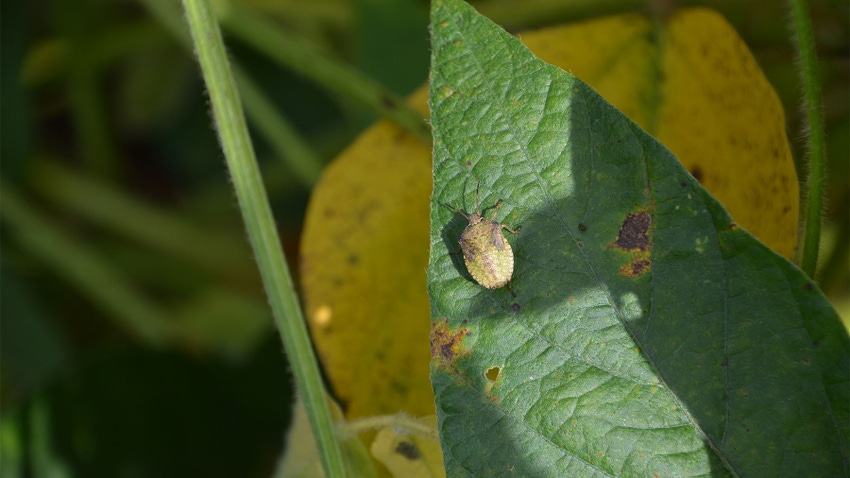
If you still have soybeans in the field, consider one more scouting trip. While it may seem like the season is over, Steve Gauck believes there are reasons to monitor soybean fields right up until harvest.
“In some situations, there may still be adjustments you can make closer to harvest than you realize,” says Gauck, a regional agronomy manager for Beck’s, based near Greensburg, Ind. “In other cases, it may amount to collecting information to either help evaluate how the management decisions you made this year worked, or to start forming a base of knowledge for making decisions for next year.”
Gauck has monitored an irrigated field in south-central Indiana all year for the Soybean Watch project. Beck’s sponsors Soybean Watch ’23.
On the lookout
Here are some things to look for during very late-season scouting trips:
Insects. “One reason we scout late is to make sure an insect like stinkbugs hasn’t moved in,” Gauck says. “They use their mouthparts to suck out of individual beans inside pods. And once they penetrate the pod, it’s open for secondary disease infections to move in as well.”
While not a major problem most years, in one of the past five years, stinkbugs were prevalent enough in some areas to create concerns. Soybean quality was affected in some cases, mostly due to diseases that invaded pods after stinkbugs opened the door.
Walking this year’s Soybean Watch field in early September, stinkbugs were scarce, although Gauck spotted a few. The level was far below that needed to worry about treatment. For treatment guidelines on stinkbugs, he refers farmers to the Purdue Corn & Soybean Field Guide. The threshold is 40 bugs per 100 sweeps with a sweep net, if pods are still green.
Diseases. Late scouting trips are also a good time to evaluate for diseases. This field was not treated with fungicide, and few signs of important diseases were present.
“We’ve been finding some signs of sudden death syndrome in fields, but we didn’t see much indication of any major issue with it in this field,” Gauck says. “We found a few leaves here and there with some frogeye leaf spot lesions, but it was very minor.
“As plants move toward senescing, you are going to find yellowing, especially lower in the plant. Some of that is just the natural process. There may be some brown spot involved in some leaves, but by now, it is not an issue.”
At this point, there is no good way to know if spraying fungicide would have helped in this field or not, Gauck notes. “The best way is to apply fungicide, but leave some strips untreated,” he advises. “Then, compare at harvest. Otherwise, you really have no idea if spraying or not spraying was the correct choice.”
Moisture level. In this field, there was an extra reason for continuing scouting and monitoring moisture levels.
“We’re finding that irrigation, when available and if needed later toward harvest, pays dividends more than most people once thought,” Gauck explains. “If it’s dry, there is good indication that another irrigation trip would pay. I usually figure irrigation pays through 50% yellow leaves.”
Read more about:
ScoutingAbout the Author(s)
You May Also Like




